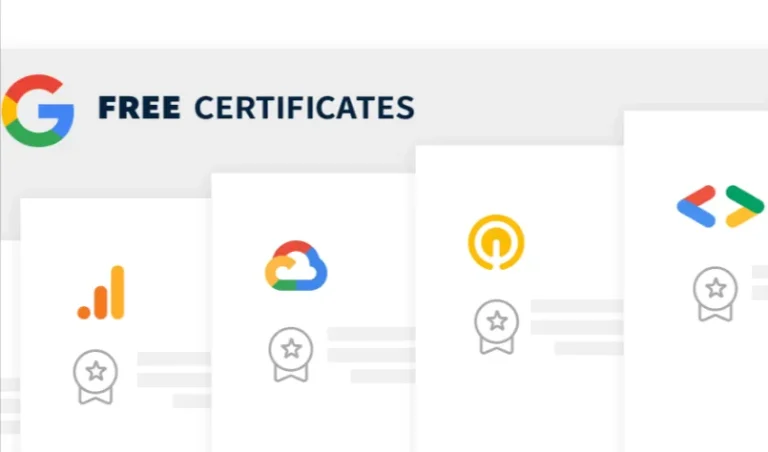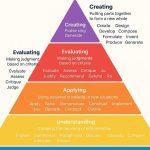Ai-powered Adaptive learning Education
The recent surge in ai technologies has necessitated the adaptation and incorporation of ai into different technologies and technical world. Education is not left out in this Tech surge hence the need to explore ai technologies in education in the aspect of Ai-powered Adaptive Learning. In this post we will learn how Ai-powered Adaptive Learning is enhancing education.
What is Adaptive Learning in Education?
Adaptive learning is a teaching method where students receive a personalized learning experience tailored to their individual needs. This approach enables teachers to adjust the curriculum to better suit each learner’s unique requirements. As a result, students learn more efficiently and effectively, with content and teaching methods adjusted to their understanding and progress.
Imagine you’re in a classroom struggling with a difficult topic. The teacher might change the lesson plan, offer real-life examples, or introduce a new activity to help you grasp the concept. This is an example of adaptive learning in action. However, this method becomes challenging when dealing with large groups of students, as providing individualized learning paths for many students is nearly impossible for a single instructor.
This is where AI in education comes into play. AI-powered e-learning platforms can handle a limitless number of students by analyzing how each learner studies. Based on the data gathered, AI algorithms provide customized content, ensuring that students focus on their weaknesses before moving on to new topics. For instance, if a student makes the same mistake repeatedly, the program will offer similar tasks, explanations, and materials until the concept is fully understood.
Who Can Benefit from Ai-powered Adaptive Learning Technologies?
One of the key benefits of adaptive learning is its ability to cater to a wide range of learners. Whether you’re a K-12 student, a university attendee, or a corporate employee, adaptive learning can adjust the material to match your level of knowledge and skill.
AI-powered adaptive learning can be applied across various fields of study, including languages, economics, science, and more. The specific subject doesn’t matter; what’s important is that artificial intelligence can significantly enhance the effectiveness of any educational process. This adaptability is what makes EdTech so valuable.
5 Ways AI-Powered Adaptive Learning Solves Educational Challenges
AI-powered adaptive learning, when implemented in Learning Experience Platforms (LXP), Learning Management Systems (LMS), Training Management Systems (TMS), or other eLearning applications, addresses several educational challenges:

- Minimizes Budget by Saving Training Resources
Personalized mentoring is highly effective—97% of mentees find it invaluable. However, providing a mentor for every employee in a large corporation is financially unfeasible. Adaptive learning maximizes training resources by analyzing data and delivering relevant materials and tasks tailored to each employee’s needs. This technology acts as a digital mentor, adapting the training program to individual requirements. - Enhances Knowledge Retention for Long-Lasting Skills
Knowledge that isn’t regularly used tends to fade. The same is true for employees who may forget much of the training they’ve completed. Adaptive learning ensures that your team is always ready to tackle challenges by continuously analyzing their knowledge, identifying gaps, and offering targeted recommendations to reinforce learning. - Boosts Learner Engagement to Foster a Continuous Learning Culture
Traditional courses often require all employees to follow the same curriculum, which can be inefficient. AI-based adaptive learning customizes the learning path for each employee, ensuring that they are engaged and focused on acquiring the skills they need most. This approach helps create a culture of continuous learning, leading to a more skilled workforce. - Increases Time Efficiency to Reduce Training Duration
E-learning already takes 40-60% less time than traditional classroom learning. Adaptive learning further optimizes time by tailoring content to each learner, allowing them to skip material they already know and focus on new or challenging topics. - Performs Deep Analytics to Track Training Efficiency and Learner Performance
Training managers can use AI to gather metrics on employee progress, enabling them to track success, identify strengths and weaknesses, and enhance the overall learning experience. AI in talent management is another valuable application that leverages these analytics.
Examples of AI-Powered Adaptive Learning in Education
Several applications demonstrate the effectiveness of AI-powered adaptive learning in education:
- Duolingo
Duolingo combines machine learning with adaptive learning to enhance the language-learning experience. The app tracks user interactions, such as the number of times a word has been seen or mistakes made in specific topics, to predict how well a learner will recall a word in context. Based on this data, Duolingo adjusts the frequency and type of practice exercises to help users retain the material. - Prodigy Math
Prodigy Math is another adaptive, gamified learning app that provides personalized content based on an adaptive algorithm. The software assesses a student’s strengths and weaknesses to deliver tasks that are both challenging and appropriate for their skill level. This personalized approach helps students develop new skills while reinforcing previously learned material. - Embibe
Embibe leverages AI and data science to help K-12 students prepare for exams by identifying and filling knowledge gaps. The platform uses diagnostic tests to assess a student’s current level and offers personalized guidance, targeted tasks, and explanations to improve their understanding of challenging topics. - Lexia PowerUp
Lexia PowerUp is an adaptive blended learning tool designed to help students in grades 6-12 improve their literacy skills. The software uses placement tests to determine the most appropriate programs and assignments for each student, providing personalized instructions and hints to support their learning journey.
How Does Adaptive Learning AI Work?
Adaptive learning technology operates through a three-step process:
- Assessing the Learner’s Knowledge
The system collects data from the entire course or specific modules, evaluating the student’s mistakes, strengths, and weaknesses. - Providing Targeted Content
Based on the analysis, the software recommends materials, assignments, or the next module for the student to complete, depending on their assessment results. - Interacting with Feedback Data
The adaptive model continuously monitors the learning process, offering variations of challenging topics in subsequent assignments if a student struggles with a particular task.
This process is often integrated into Learning Management Systems (LMS) to provide personalized content and gain insights into areas where students need more focus.
What is Adaptive Machine Learning?
Adaptive machine learning is a form of machine learning that requires human intervention only when necessary. It can learn autonomously, continuously improving as it receives new data. Adaptive ML represents the fourth generation of machine learning, combining the strengths of previous generations:
- Rule-Based Machine Learning
The first generation relied on manually created rules, which were time-consuming and limited in scope. - Simple Machine Learning
The second generation used statistics to make predictions based on labeled data, but it required a large amount of data to be effective. - Deep Learning
The third generation mimicked the human brain using neural networks, allowing the system to make decisions based on experience and raw data. - Adaptive Learning
The fourth generation combines the best features of its predecessors, learning continuously and adapting to changing environments without requiring constant updates.
Differences Between Traditional ML and Adaptive ML
Traditional machine learning (ML) and adaptive ML differ in several key ways:
- Process Speed
Traditional ML uses two separate channels—one for training and another for predictions—making the process slower. Adaptive ML, on the other hand, uses a single channel, allowing it to gather data and learn simultaneously, which speeds up the process. - Environmental Adaptability
Traditional ML operates in a static environment, and any changes can cause errors, requiring significant resources to update. Adaptive ML, however, is designed to adapt to changing environments, making it more resilient and flexible. - Learning from Data
Unlike traditional ML, which requires constant retraining to improve, adaptive ML continuously learns from new data, becoming more accurate and effective over time.
Types of Machine Learning Algorithms
Machine learning utilizes different algorithms to acquire, process, and make decisions based on new data:
- Supervised Learning
In supervised learning, machines are trained using labeled data, where the desired outputs are known. The algorithms identify patterns and relationships to make predictions, with human intervention required to correct mistakes. - Semi-Supervised Learning
Semi-supervised learning involves both labeled and unlabeled data. The machine learns from the labeled data and applies this knowledge to label the raw data. - Unsupervised Learning
Unsupervised learning requires the machine to find patterns in data without any labeled examples. The machine categorizes data based on its analysis, making decisions autonomously. - Reinforcement Learning
In reinforcement learning, the machine is provided with rules and desired outcomes. The algorithm then explores various options to find the optimal result, learning from its experiences to improve future decisions.
AI-Powered Adaptive Learning Tools
Adaptive learning tools can be categorized into two types:
- Simple Adaptive Tools
These tools use a linear model to assess a learner’s progress. For example, a correct answer might lead to the next point, while a wrong answer might result in a different path. This approach provides a basic level of personalization but lacks full adaptivity. - Complex Adaptive Tools
These tools use multiple data points, such as previous answers, interactions, and current situations, to offer personalized content. They rely on AI’s inference engine, which applies logical rules to make assumptions and provide tailored learning experiences.
An example of a simple adaptive learning tool is Adobe Captivate, which allows instructors to create branched scenarios. However, complex adaptive tools require a skilled development team to implement effectively.
The Future of Adaptive Learning in Education
The global corporate e-learning market is expected to reach $50 billion by 2026, driven by the increasing use of adaptive learning technologies. Over 90% of corporations already use these tools to train their employees, often through smartphones and other mobile devices. The broader e-learning market is projected to grow to $243 billion by 2022, fueled by the shift to distance education and the adoption of new technologies.
Adaptive learning is at the forefront of this trend, with applications in higher education, K-12 classrooms,
and corporate training. While early examples, like the PLATO Learning System, offered basic e-learning in the 1970s, today’s adaptive learning tools are powered by AI, providing a more personalized and efficient learning experience.
In the future, AI-powered adaptive learning will continue to evolve, becoming an integral part of the education system. It will enable teachers to provide tailored learning experiences to large groups of students, improving outcomes and making education more accessible and effective for everyone.








